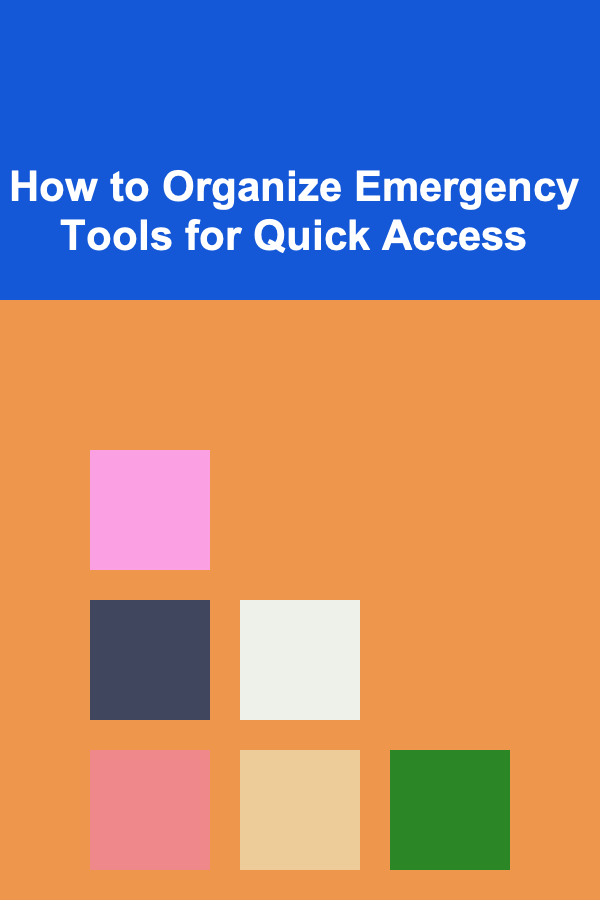
How to Deal with Panic Attacks
ebook include PDF & Audio bundle (Micro Guide)
$12.99$7.99
Limited Time Offer! Order within the next:

Panic attacks are intense, sudden surges of fear or anxiety that can come on unexpectedly. They are often accompanied by physical and emotional symptoms such as a rapid heart rate, shortness of breath, chest pain, dizziness, and feelings of detachment from reality. Although these experiences can feel overwhelming and frightening, panic attacks are treatable, and there are effective strategies to manage and prevent them. This article will explore what panic attacks are, their triggers, how they affect the body and mind, and practical methods to cope with and reduce the frequency of panic attacks.
What Are Panic Attacks?
A panic attack is a sudden onset of intense fear or discomfort that peaks within minutes and typically lasts between 5 and 20 minutes. It can occur without any obvious trigger, or it may follow a stressful or anxiety-provoking event. While the experience is physically and emotionally distressing, panic attacks are not dangerous in themselves.
The key characteristics of a panic attack include:
- Rapid heart rate: This can feel like your heart is racing, pounding, or fluttering.
- Shortness of breath: You may feel like you can't breathe or that you are suffocating.
- Chest pain or discomfort: Often described as a feeling of tightness or pressure in the chest.
- Dizziness or lightheadedness: A sensation of faintness or losing control of one's body.
- Nausea: A feeling of queasiness or an upset stomach.
- Shaking or trembling: A physical response to the overwhelming fear or anxiety.
- Sweating: Increased perspiration as the body reacts to the stress.
- Fear of losing control or dying: This can lead to panic attacks being misinterpreted as heart attacks or other serious health emergencies.
- Chills or hot flashes: Sudden temperature changes in the body.
Panic attacks can vary in severity, and the frequency of attacks can differ from person to person. Some individuals experience them sporadically, while others may face them more regularly.
The Science Behind Panic Attacks
The body's response to panic attacks is rooted in the fight-or-flight response, an evolutionary mechanism designed to help us survive dangerous situations. When the brain perceives a threat, the sympathetic nervous system is activated, triggering the release of stress hormones like adrenaline and cortisol. This leads to various physical responses, such as increased heart rate and heightened awareness.
In the case of panic attacks, however, this response occurs even in the absence of an actual threat. This can be triggered by certain events, stress, or even internal triggers like negative thoughts or memories. Over time, if panic attacks occur frequently, they can lead to a cycle of heightened anxiety and fear, causing individuals to avoid situations where they previously experienced an attack, which can result in agoraphobia.
Common Triggers of Panic Attacks
While panic attacks can seemingly arise without any clear reason, several factors and situations can trigger them. These include:
1. Stress and Anxiety
High levels of ongoing stress or anxiety, such as dealing with work pressure, family issues, or financial struggles, can increase the likelihood of experiencing a panic attack. Chronic stress can lead to an overactive sympathetic nervous system, making the body more susceptible to episodes of panic.
2. Phobias
Specific phobias, such as fear of heights, crowded places, or flying, can trigger panic attacks when exposed to the feared situation. The anxiety caused by confronting the phobia can bring about the fight-or-flight response, leading to a panic attack.
3. Past Trauma
People who have experienced traumatic events, such as accidents, abuse, or loss, may be more vulnerable to panic attacks. Trauma can disrupt the brain's normal functioning and make it more sensitive to stressors.
4. Medical Conditions
Certain medical conditions, such as thyroid disorders, respiratory conditions (like asthma), or heart disease, may mimic the symptoms of a panic attack or increase the likelihood of one occurring. Additionally, withdrawal from drugs or alcohol can also provoke panic attacks in some individuals.
5. Genetic Factors
There may be a genetic predisposition to panic attacks, meaning that individuals with a family history of anxiety or panic disorders may be more likely to experience panic attacks themselves.
6. Caffeine and Stimulants
Excessive consumption of caffeine or stimulants, such as energy drinks or certain medications, can heighten anxiety and lead to the physical symptoms commonly associated with panic attacks.
The Impact of Panic Attacks
Panic attacks can have a significant impact on a person's emotional, social, and physical well-being. Frequent panic attacks may lead to:
- Agoraphobia: The fear of being in situations where escape might be difficult or help unavailable. People with panic attacks may begin to avoid certain places or situations, leading to isolation.
- Generalized Anxiety Disorder (GAD): An ongoing pattern of excessive worry and anxiety that can further increase the risk of panic attacks.
- Depression: The constant fear of having a panic attack can lead to feelings of helplessness, hopelessness, or depression.
- Physical Health Problems: Chronic stress from panic attacks can contribute to long-term health issues, such as digestive problems, headaches, and difficulty sleeping.
How to Cope with Panic Attacks
While panic attacks can be overwhelming, there are several strategies and techniques that can help you manage and reduce their frequency. The following methods can empower you to deal with panic attacks in a healthy and productive way.
1. Breathing Exercises
One of the most effective ways to reduce the physical symptoms of a panic attack is through controlled breathing. Focusing on your breath helps activate the parasympathetic nervous system, which counteracts the fight-or-flight response.
The 4-7-8 Breathing Technique:
- Inhale through your nose for 4 counts.
- Hold your breath for 7 counts.
- Exhale slowly through your mouth for 8 counts.
Repeat this process several times until you feel more grounded.
2. Mindfulness and Grounding Techniques
Mindfulness is the practice of focusing on the present moment without judgment. It helps you detach from the intense fear and anxiety of a panic attack. Grounding techniques can also bring your awareness to the present moment and distract you from the overwhelming sensations of a panic attack.
5-4-3-2-1 Grounding Exercise:
- Look around and identify 5 things you can see.
- Identify 4 things you can touch.
- Listen for 3 things you can hear.
- Identify 2 things you can smell.
- Focus on 1 thing you can taste.
This exercise helps engage your senses and calm your mind.
3. Cognitive Behavioral Therapy (CBT)
Cognitive Behavioral Therapy (CBT) is one of the most effective treatments for panic attacks. It focuses on changing negative thought patterns and behaviors that contribute to anxiety. By identifying and challenging irrational thoughts, individuals can learn to reframe their thinking and reduce the intensity of panic attacks.
Working with a trained therapist, you can explore the thoughts and beliefs that trigger panic attacks and replace them with more realistic and calming perspectives.
4. Progressive Muscle Relaxation
Progressive Muscle Relaxation (PMR) involves tensing and then relaxing different muscle groups in the body. This technique helps reduce physical tension that often accompanies panic attacks and promotes a sense of relaxation.
Start by tensing your muscles for about 5 seconds, then slowly release the tension while focusing on the sensation of relaxation. Move through different muscle groups, such as your hands, arms, shoulders, legs, and stomach.
5. Regular Exercise
Regular physical activity can help reduce anxiety and improve your overall sense of well-being. Exercise promotes the release of endorphins, which are natural mood boosters. Aerobic exercises, such as walking, jogging, swimming, or cycling, can be especially effective in reducing anxiety.
6. Adequate Sleep
Poor sleep can exacerbate anxiety and make you more prone to panic attacks. Ensure that you're getting enough rest by establishing a consistent sleep schedule and creating a calming bedtime routine.
7. Medication
For some individuals, medication may be necessary to manage panic attacks, especially if they occur frequently or severely impact daily life. Common medications prescribed for panic attacks include:
- Selective Serotonin Reuptake Inhibitors (SSRIs): These medications are often prescribed to help regulate mood and reduce anxiety.
- Benzodiazepines: Short-term use of benzodiazepines can help alleviate the symptoms of a panic attack, but they are not typically recommended for long-term use due to the potential for dependence.
Medications should always be prescribed and monitored by a healthcare professional.
8. Lifestyle Changes
Certain lifestyle changes can help reduce the occurrence of panic attacks. These include:
- Limiting caffeine and alcohol consumption.
- Reducing stress through relaxation techniques or hobbies.
- Practicing healthy eating habits.
- Staying connected with friends, family, or support groups.
Seeking Professional Help
If panic attacks are interfering with your ability to function, it's important to seek professional help. A healthcare provider can assess your situation, provide a diagnosis, and recommend a treatment plan tailored to your needs. Therapy, medication, or a combination of both can help manage and reduce panic attacks.
Conclusion
Panic attacks can be a frightening and disruptive experience, but they are manageable. By understanding their triggers, learning effective coping strategies, and seeking appropriate treatment, individuals can regain control over their lives and reduce the impact of panic attacks. Remember, it's important to be patient with yourself during the process, as healing takes time. With the right tools and support, you can overcome panic attacks and lead a fulfilling, anxiety-free life.

How to Avoid the Dangers of Lifestyle Creep in Your 30s
Read More
How to Choose the Right Soundproofing for Home Renovations
Read More
How to Organize Emergency Tools for Quick Access
Read More
How to Use Simple Tools to Automate Routine Tasks in Your Business
Read More
Mastering Soft Skills: Why They Matter in the Job Market
Read More
Choosing the Right Caulk Gun and Applying Caulk Like a Pro
Read MoreOther Products

How to Avoid the Dangers of Lifestyle Creep in Your 30s
Read More
How to Choose the Right Soundproofing for Home Renovations
Read More
How to Organize Emergency Tools for Quick Access
Read More
How to Use Simple Tools to Automate Routine Tasks in Your Business
Read More
Mastering Soft Skills: Why They Matter in the Job Market
Read More